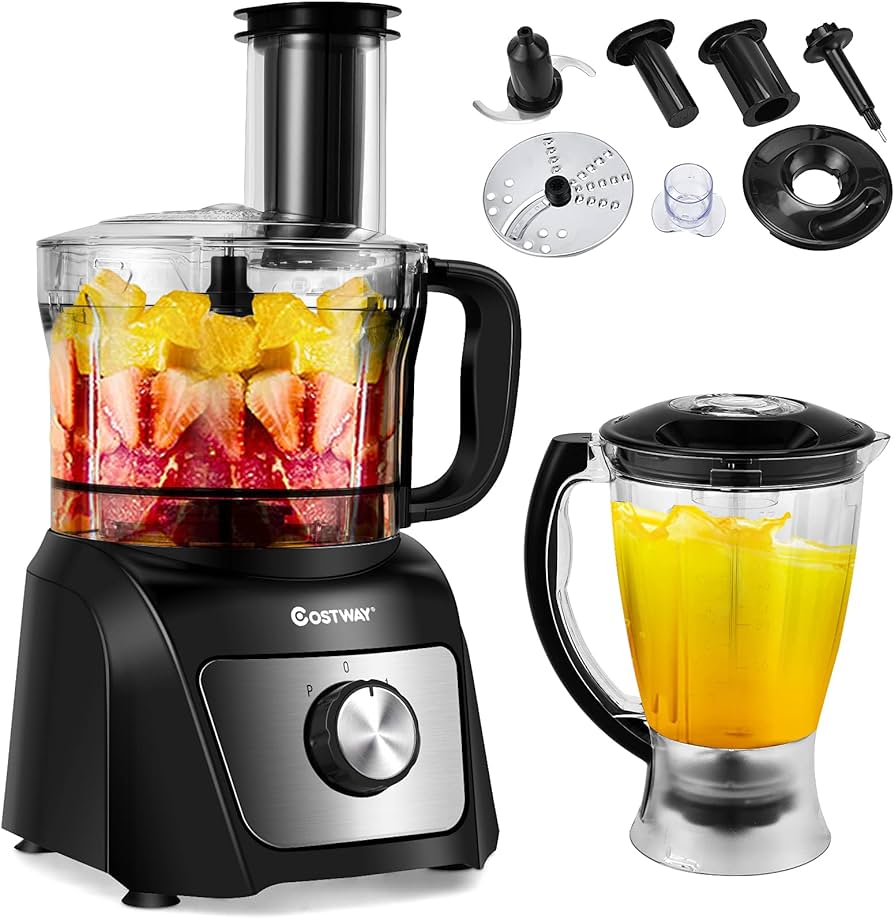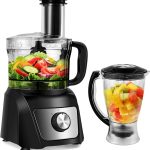Introduction:
Blenders and food processors are both essential kitchen appliances, each with its own set of functions and uses. However, sometimes you might wonder whether you can use a blender as a food processor. While the two appliances have similarities, they also have distinct differences that affect their performance in various tasks. This comprehensive guide explores the possibilities, limitations, and practical workarounds for using a blender in place of a food processor.
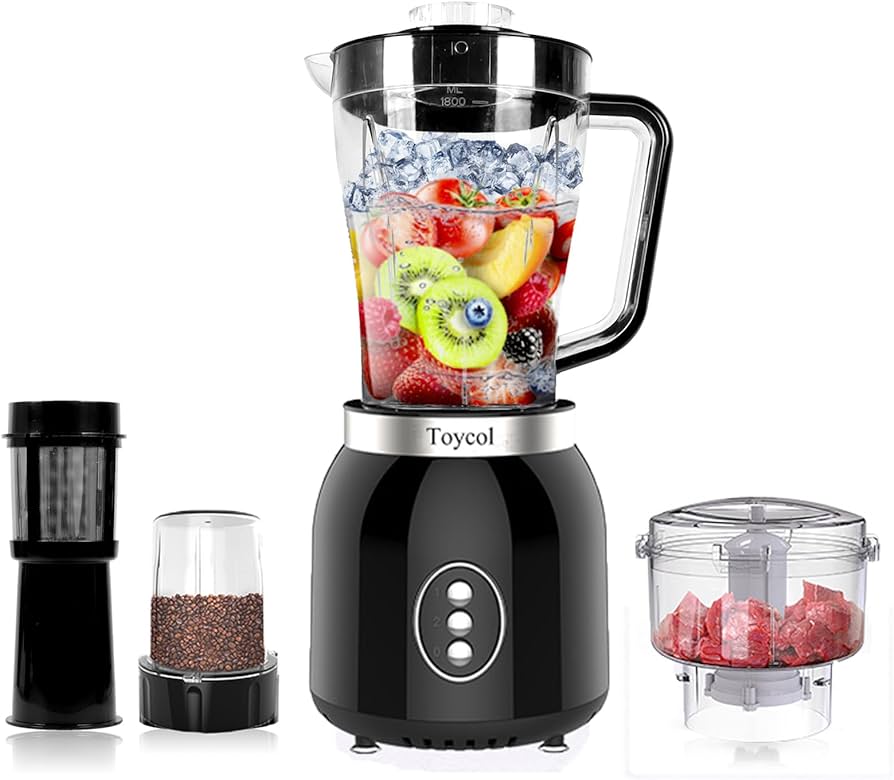
Can You Use a Blender as a Food Processor:
What Are the Limitations and Workarounds?
Understanding Differences:
How Do Blenders and Food Processors Differ?
To determine if you can use a blender as a food processor, it’s essential to understand the fundamental differences between the two appliances.
Design and Functionality:
Blenders: Blenders are designed primarily for liquefying and puréeing. They have a tall, narrow jar and sharp, fixed blades to create smooth textures. Blenders excel at making smoothies, soups, and sauces.
Food Processors: Food processors are designed for chopping, slicing, mixing, grating, and kneading dough. They have a wide, shallow bowl and interchangeable blades and discs for various tasks. Food processors excel at handling solid foods and performing repetitive tasks efficiently.
Power and Speed Settings:
Blenders: Blenders typically have higher power motors and are designed to operate at high speeds for extended periods. They usually have fewer speed options compared to food processors but offer settings specific to blending, crushing ice, or puréeing.
Food Processors: Food processors usually have motors designed for short bursts of power and a wider range of speed settings. They often include a pulse function for better control over chopping and slicing.
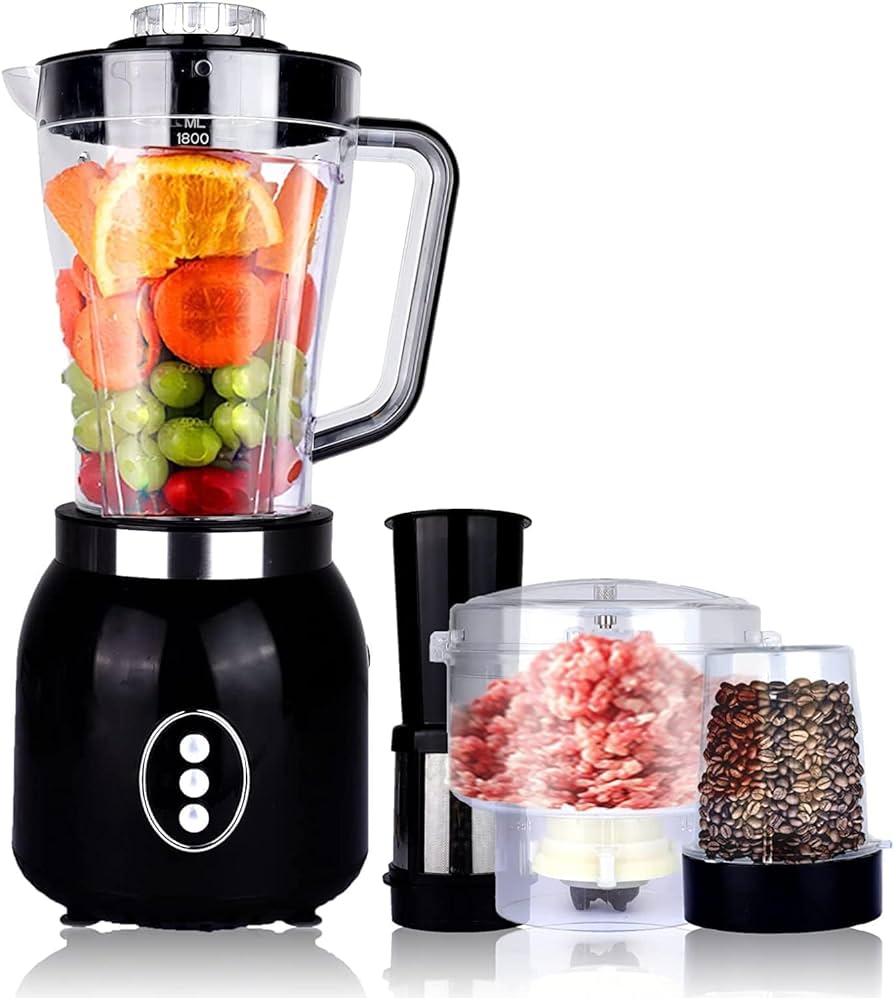
Attachment and Accessories:
Blenders: Blenders generally come with a single blade attachment, designed to blend and purée ingredients uniformly.
Food Processors: Food processors come with various blades and discs for slicing, shredding, grating, and even kneading dough. These interchangeable accessories allow them to perform a broader range of tasks.
Blender as a Food Processor:
What Tasks Can You Perform and How?
Although blenders and food processors have distinct differences, you can use a blender for some food processor tasks with a few adjustments and workarounds.
Chopping and Slicing:
Limitations: Blenders cannot chop or slice ingredients as evenly as a food processor due to their design and blade configuration. Ingredients may get stuck or blend unevenly without proper technique.
Workaround: To achieve a coarse chop, use the pulse function on your blender. Add small batches of ingredients and pulse in short bursts. Frequently check the consistency to ensure even chopping, and shake the blender jar between pulses to redistribute ingredients.
Example: Chopped Vegetables for Salsa
- Add roughly chopped vegetables (tomatoes, onions, peppers) to the blender.
- Use the pulse function in short bursts until desired consistency is reached.
- Shake the jar between pulses to mix ingredients evenly.
Mixing and Blending:
Limitations: Blenders excel at blending liquids and softer ingredients but may struggle with thick, dry mixtures without sufficient liquid added.
Workaround: For thicker mixtures like hummus, batters, or dips, add liquid gradually while blending to maintain a smooth consistency. You may need to stop occasionally to scrape down the sides.
Example: Hummus Preparation
- Add chickpeas, tahini, lemon juice, and garlic to the blender.
- Blend on medium speed, gradually adding olive oil and water until smooth.
- Stop to scrape down the sides as needed to ensure uniform blending.
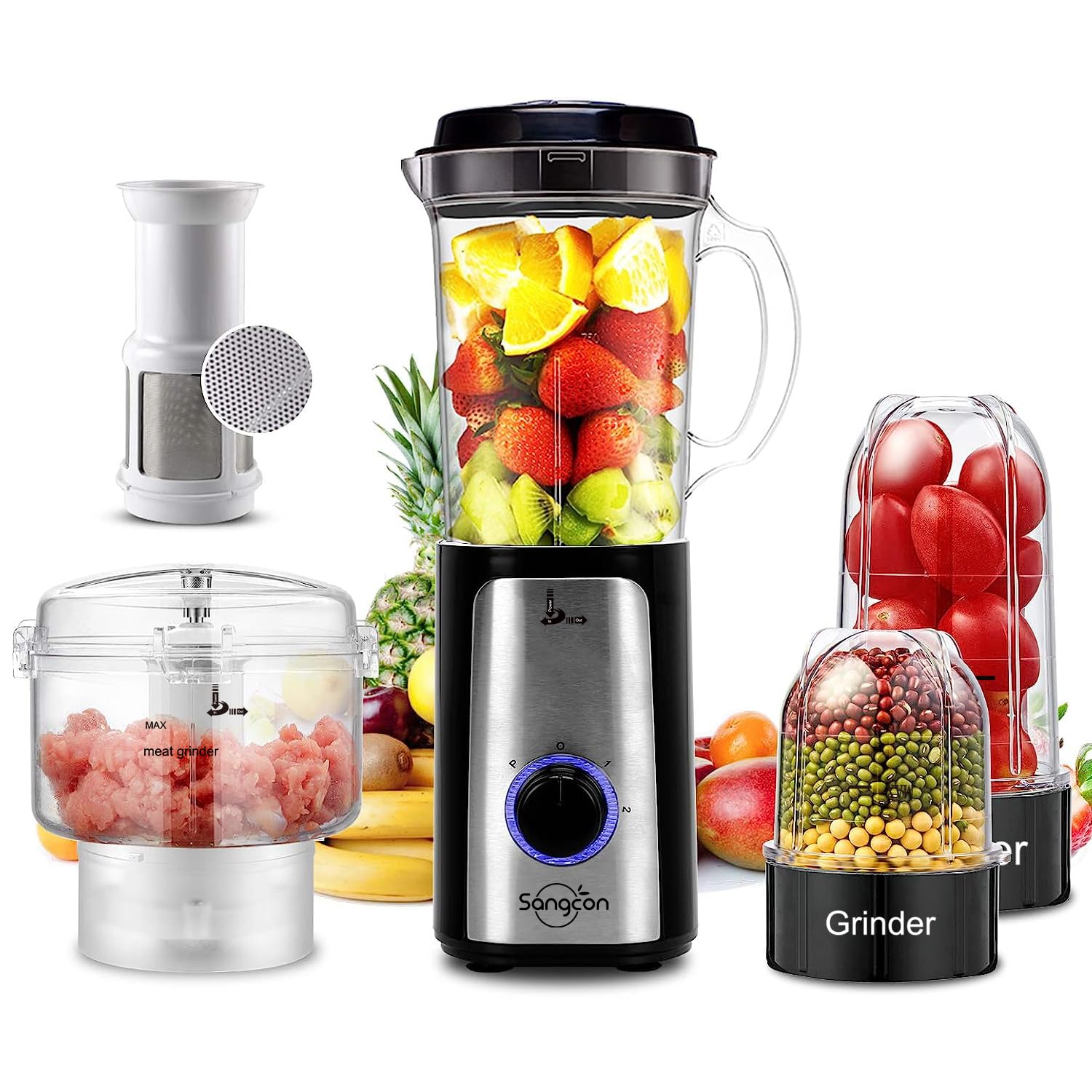
Pureeing and Making Sauces:
Versatile Function: Blenders are well-suited for puréeing and making sauces, as these tasks involve liquefying ingredients to a smooth consistency.
Techniques: For best results, use the blender’s higher speed settings and add liquids like broth or oil to help achieve a smooth texture. Gradually introduce solid ingredients to prevent motor strain.
Example: Tomato Sauce
- Combine chopped tomatoes, garlic, onion, herbs, and olive oil in the blender.
- Blend on high speed until smooth.
- Adjust consistency by adding more olive oil or broth as necessary.
Making Dough and Grinding:
Limitations: Blenders generally are not designed to knead dough or grind hard substances like nuts and seeds efficiently. The blade design and motor power are not optimized for these tasks.
Workaround for Dough: If you need to knead dough, it’s better to use hands or a stand mixer. However, for small quantities, you can mix wet and dry ingredients in a blender and knead manually afterward.
Workaround for Grinding: To grind nuts, seeds, or grains, use short pulses and work in small batches. Adding a bit of sugar or salt can help create friction, resulting in a finer grind.
Example: Almond Flour
- Add a small batch of almonds to the blender.
- Use the pulse function until you achieve a fine flour-like consistency.
- Sift the mixture to remove any larger pieces and repeat the process if necessary.
Recipes and Techniques:
How to Adapt Food Processor Recipes for Blender Use?
Adapting food processor recipes for use with a blender requires adjusting the method and possibly ingredients to achieve similar results.
Nut Butters:
Original Method: Food processors efficiently grind nuts into butter due to their sturdy blade and large bowl.
Blender Adaptation: Use a high-speed blender and work in small batches. Add oil gradually to help achieve the desired consistency.
Example: Homemade Peanut Butter
- Add peanuts to the blender.
- Blend on high speed, gradually adding peanut oil.
- Pause to scrape down sides and continue blending until smooth and creamy.
Pie Crust:
Original Method: Food processors mix dry and wet ingredients quickly, producing a crumbly dough without overworking it.
Blender Adaptation: Use the pulse function to mix dry ingredients first. Add cold butter and pulse until a crumbly texture forms, then gradually add cold water while pulsing to combine into dough.
Example: Pie Crust
- Add flour, salt, and sugar to the blender.
- Pulse to mix dry ingredients evenly.
- Add cold, cubed butter and pulse until the mixture resembles coarse crumbs.
- Gradually add ice water while pulsing until dough forms.
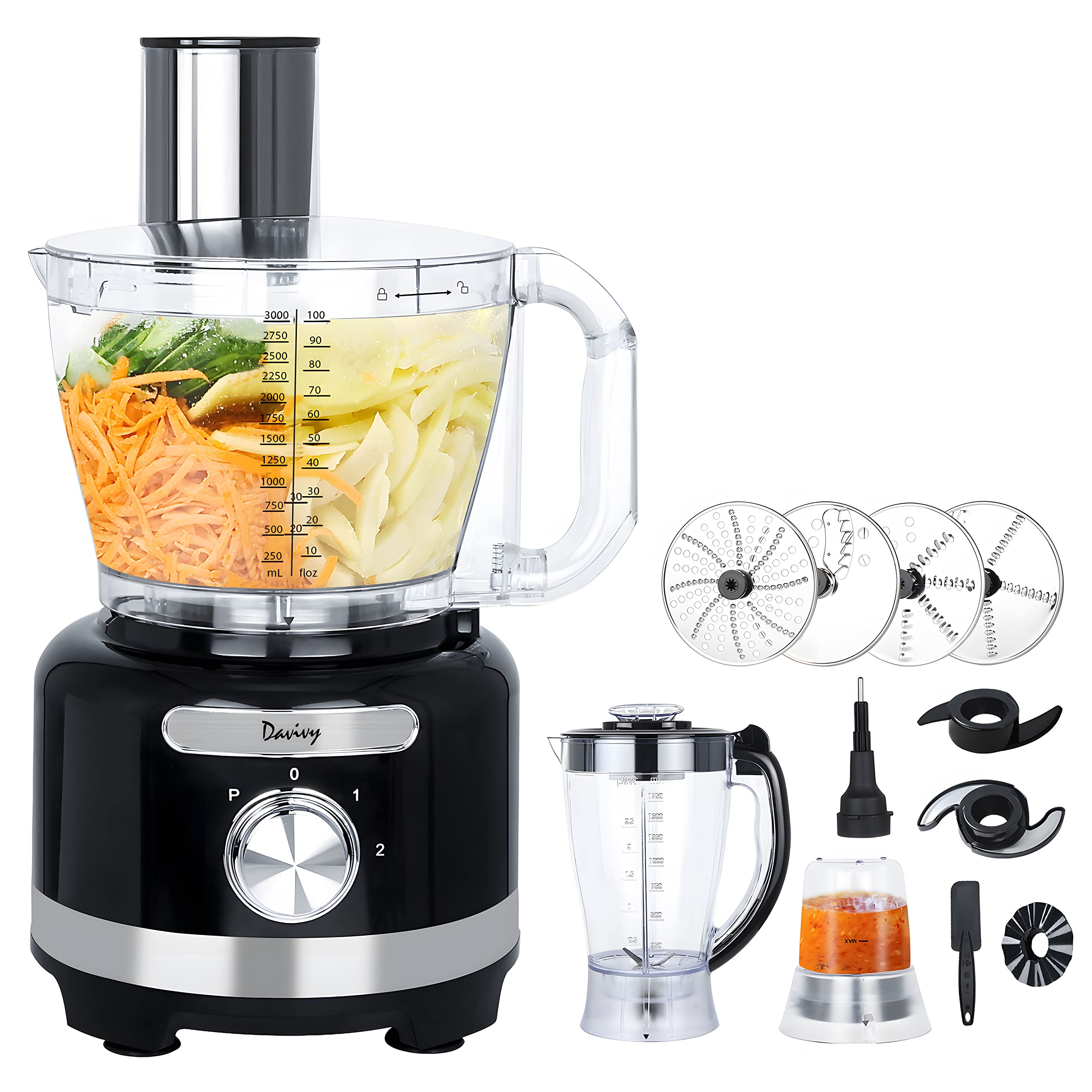
Pesto:
Original Method: Food processors make pesto by blending basil, nuts, garlic, cheese, and olive oil into a uniform paste.
Blender Adaptation: Use the blender’s mid to high speed settings and add ingredients in stages to prevent overworking the motor.
Example: Classic Pesto
- Add basil leaves, garlic, and pine nuts to the blender.
- Blend on medium speed, slowly adding olive oil.
- Add Parmesan cheese and blend until smooth.
- Adjust consistency with more olive oil if necessary.
Grated Cheese:
Original Method: Food processors easily grate cheese using grating discs.
Blender Adaptation: Cut cheese into smaller chunks and use the pulse function. Ensure cheese is cold to prevent clumping.
Example: Grated Mozzarella
- Cut mozzarella into small chunks.
- Place cheese chunks in the blender.
- Use the pulse function to grate cheese to the desired consistency, shaking the jar as needed.
Common Mistakes:
What Errors Should You Avoid When Using a Blender as a Food Processor?
Avoiding common mistakes can help you use your blender more effectively as a food processor.
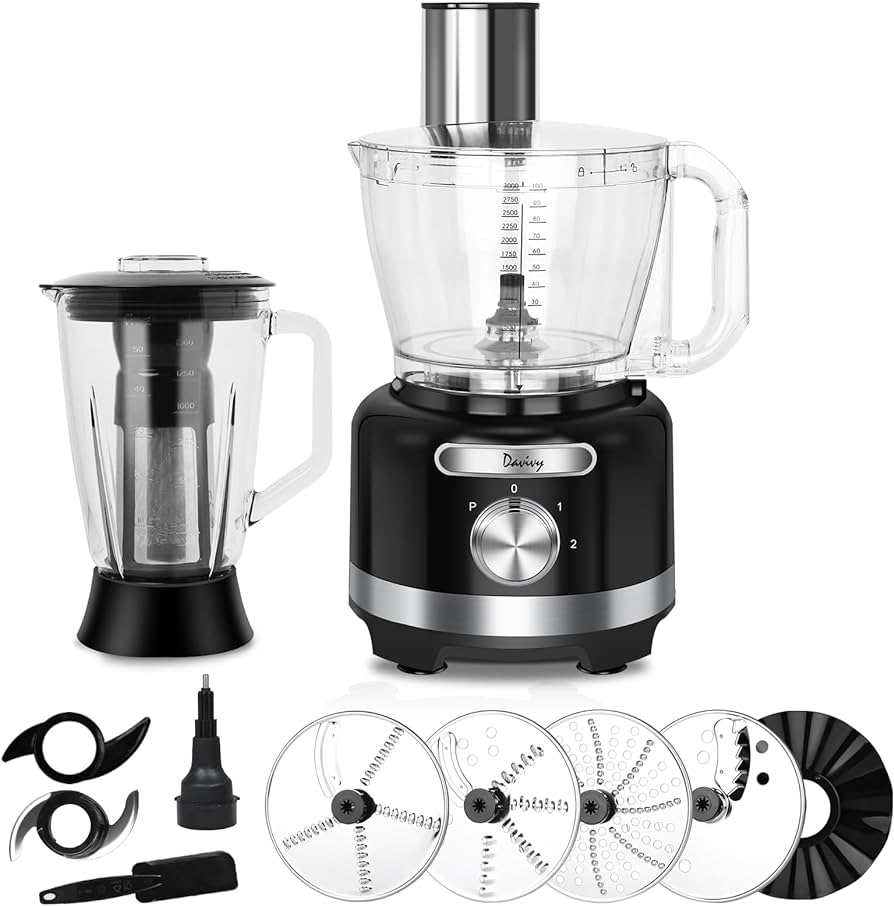
Overloading:
Avoid Overfilling: Blenders have less capacity than food processors. Overloading can strain the motor and lead to uneven results. Work in small batches for better control and consistency.
Ignoring Liquids:
Add Liquids Judiciously: Blenders require liquids to create a vortex that pulls ingredients towards the blades. Ensure to add sufficient liquid, but not too much, as it may result in too thin a mixture.
Incorrect Speed Settings:
Use Appropriate Speeds: Using the wrong speed setting can hinder the effectiveness of your blender. For chopping or coarse textures, use the pulse function or lower speeds.
Ignoring Safety:
Secure Lid: Always ensure the blender lid is securely fastened before blending to avoid spills and potential injuries.
Monitoring Motor:
Avoid Overheating: Blenders can overheat during prolonged use. Allow the motor to cool down if you notice it becoming hot or emitting a burning smell.
Conclusion
While a blender is not a one-to-one replacement for a food processor, it can handle many food processing tasks with a few adjustments and techniques. Understanding the fundamental differences between the two appliances, leveraging specific blender features, and following expert advice can help you achieve desired results. With the right approach, your blender can perform a variety of tasks, making it a versatile addition to any kitchen.
